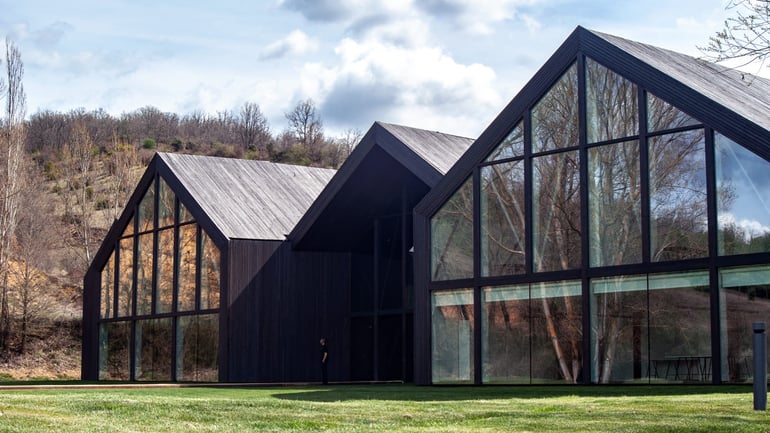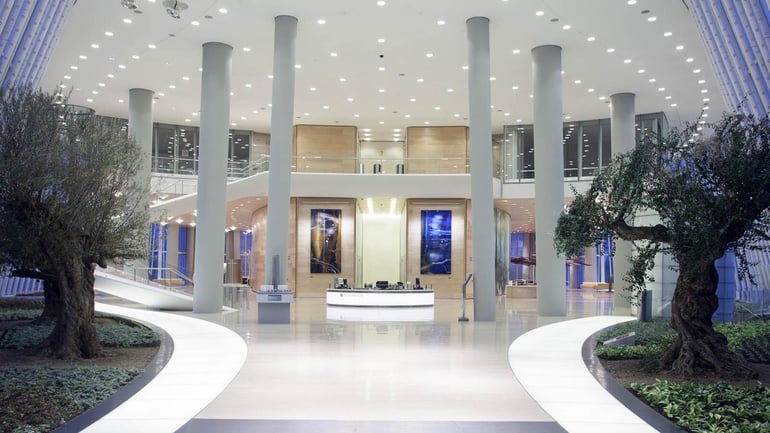Thought you seen all there is to see in the building world? Like traditional factories with OPC UA, edge computing, and cobots, the construction world is taking the first steps towards a renaissance. Developed in Germany, with the aim of integrating buildings with the environment in a sustainable way, bio-construction is presented as one of the new opportunities for engineering and architecture.
What is bio-construction?
Bio-construction is a science of building that optimises the use of resources depending on the context, based on four concepts:
- Natural materials. In addition to being natural, the materials belong to the place where the building is constructed, and their entire life cycle respects the environment.
- Sustainability. Bio-construction combines respect for environmental, social, and economic conditions. The materials come from nearby renewable sources, and the use of resources is adapted to the circumstances of the place and the user.
- Collaboration. One of the principles of bio-construction is collaborative, communicative, and horizontal work. Traditional construction techniques, as well as alternative and novel techniques, are applied in order to build a bespoke ecological building.
- Well-being. Buildings with good thermal, acoustic, and lighting conditions, without contaminating emissions or pollution, are one of the main objectives of bio-construction.

What are the most innovative aspects of bio-construction?
Bio-construction modifies some of the traditional construction processes and resources in order to make the entire process more ecological. Thanks to these changes, sustainable buildings simplify maintenance tasks, optimise energy consumption, and reduce the use of toxic materials (both for us and for the environment).Geobiological study
The first step in bio-construction is an exhaustive study of the environment: geography, climate, and the culture of the place. This study is performed as a pre-requisite to the choice of materials, and as a plan for detecting possible issues (electromagnetic fields, radon gas, underground water supplies, etc).Structure
For the structure of the building, ceramic blocks and bricks, earth, wood, stone, and straw are usually used; all extracted and previously treated in a sustainable manner. The choice of materials varies, as we have already mentioned, depending on the environment.
One of the most important aspects in bio-construction is insulation using natural materials: cork, cellulose, vegetable fibres, etc. Exterior and interior walls (lime mortar, natural plaster, clay...), windows, doors, beams, and the paints and varnishes are also made with natural products that have been treated in an ecological way and are not harmful nor emit toxic gases. All wood resources must come from controlled felling that is environmentally friendly.
Electrical installation
Electrical installations in bio-construction are usually carried out in the form of a spike, with a good ground connection and ensuring not to place cables behind the headboards of the beds to avoid electric fields.
Is bio-construction a great opportunity for engineering?
Bio-construction has not stopped growing in recent years. Its personalised design, the distribution of spaces aimed at optimising energy consumption and the use of natural resources make it an attractive trend for builders of houses, rural guesthouses, and hotels. Some companies have even implemented this type of building already, such as the Torre Iberdrola in Bilbao, or the Fundación Antonino y Cinia in León.
In 2020, the green building materials industry reached a value of 299 billion dollars, and all data identifies it as a rising trend. If you are an engineer, and you are passionate about construction, materials and ecology, this is one of the many opportunities that can turn your professional career around. Don't hesitate, go for it - with BETWEEN!


